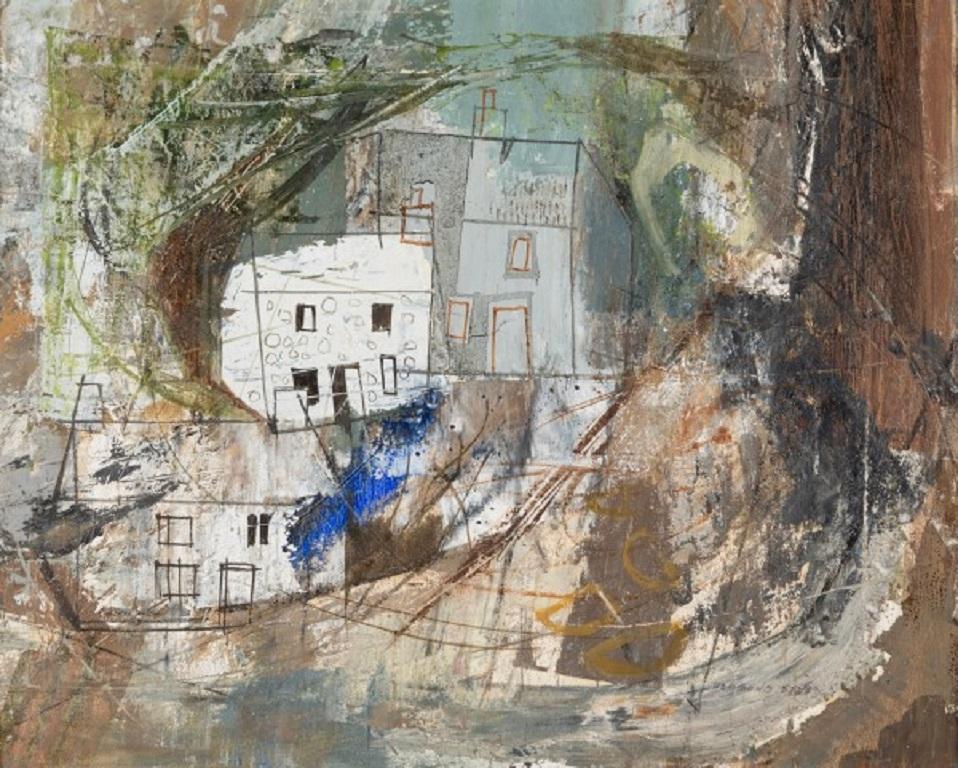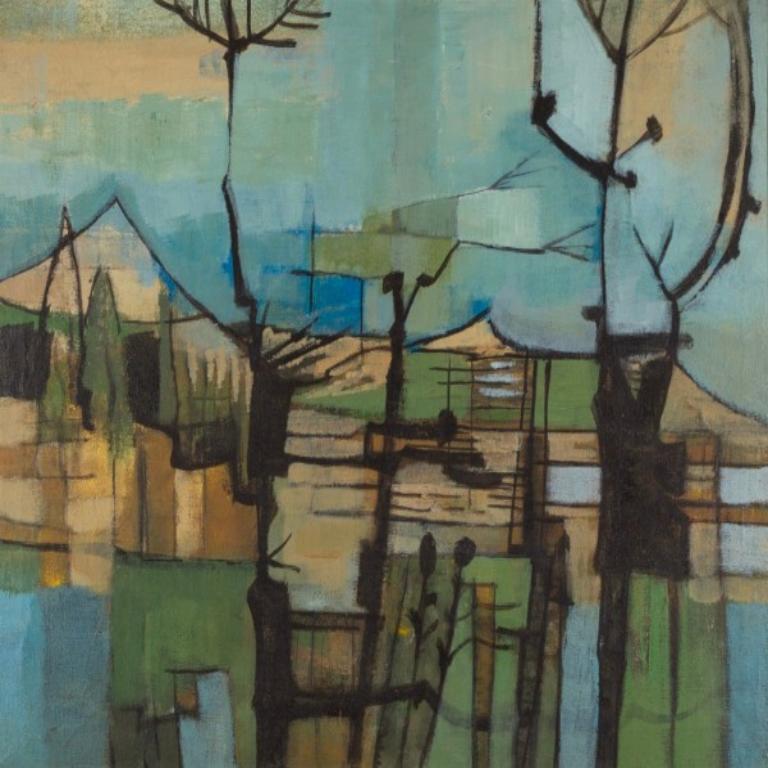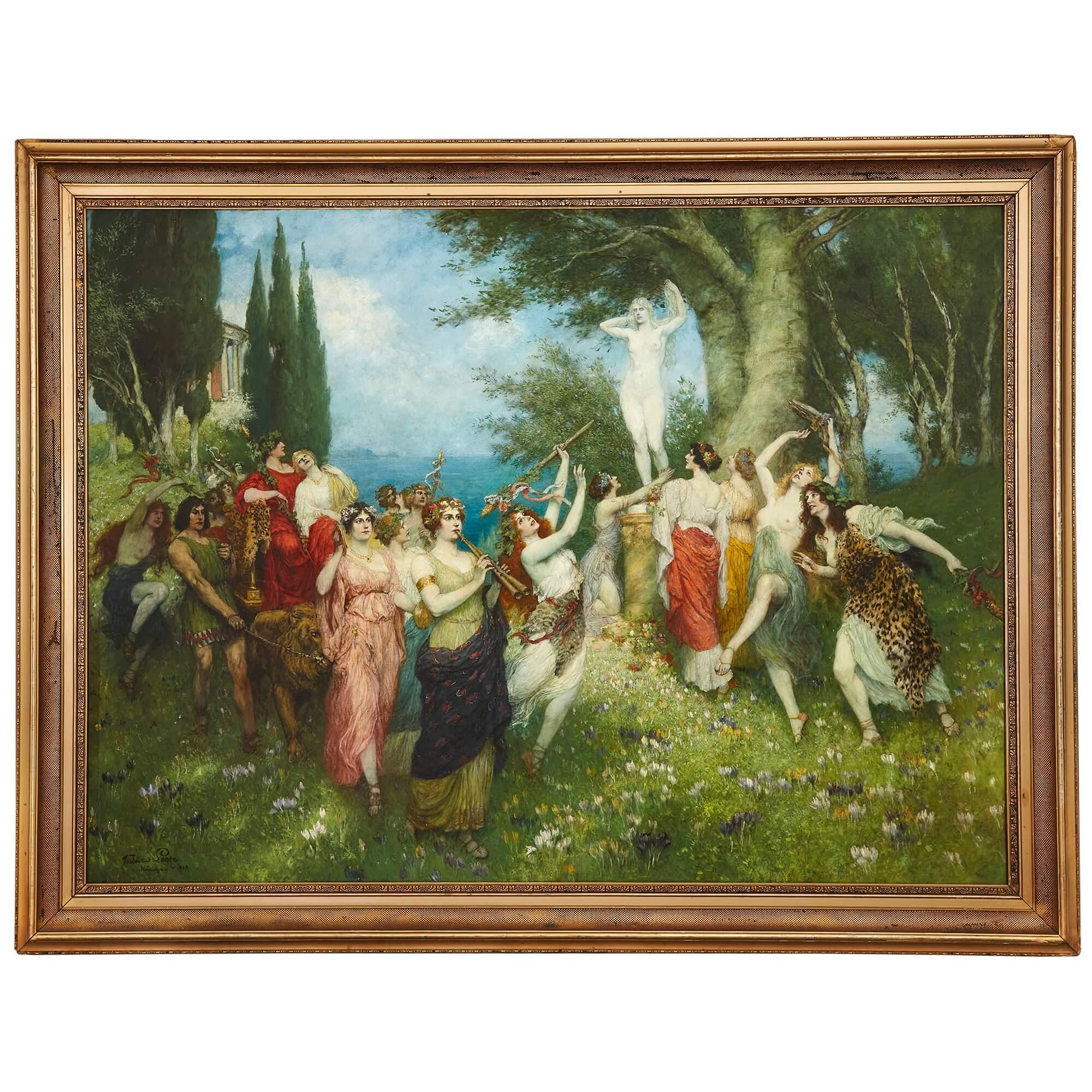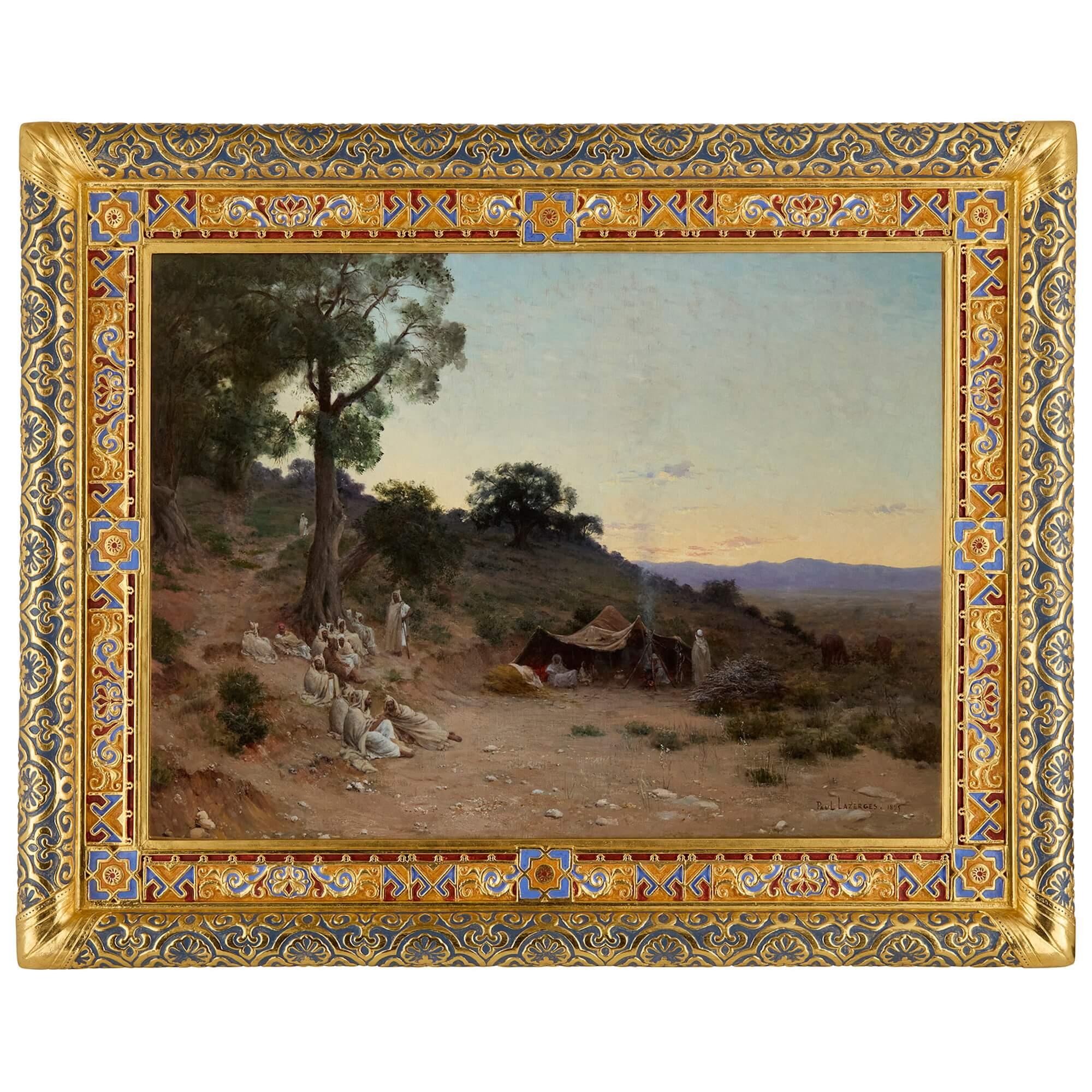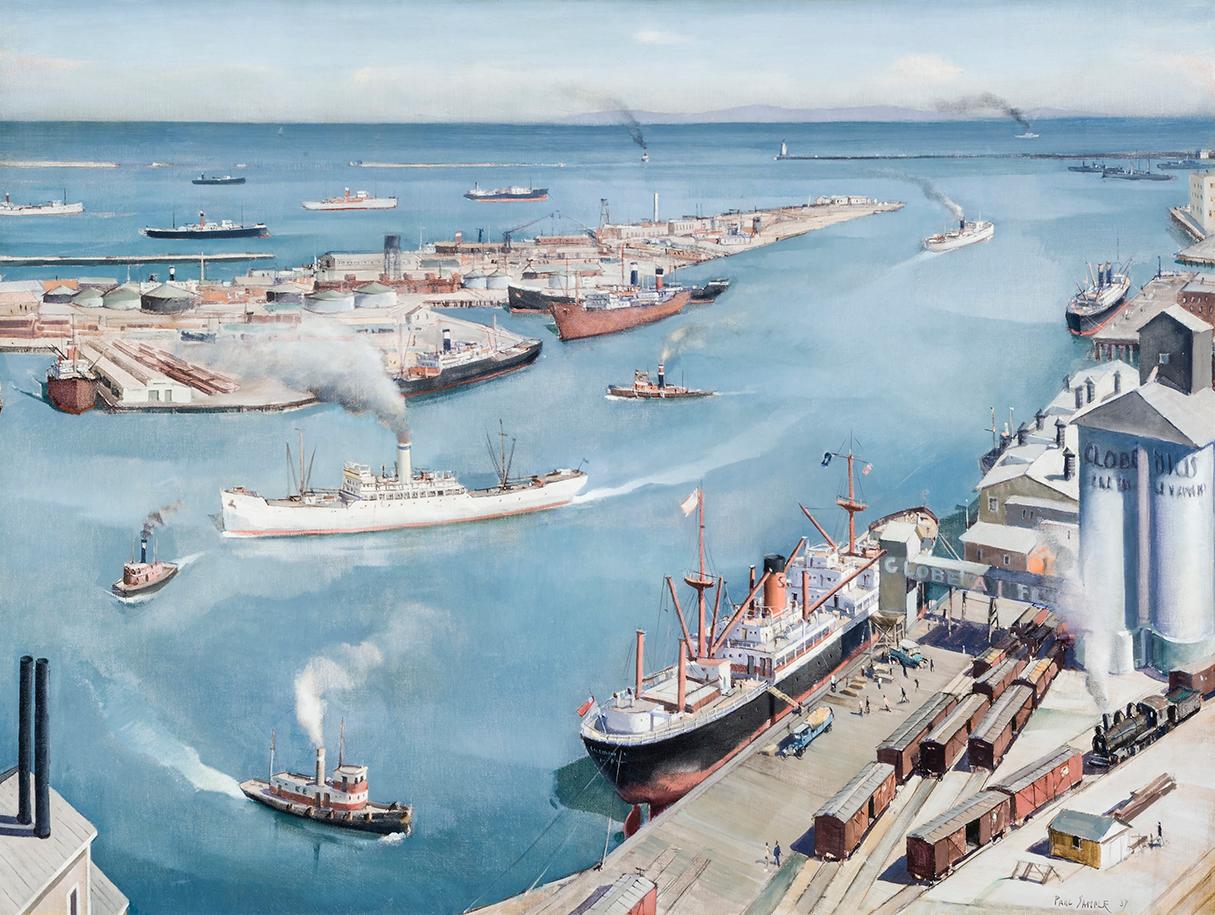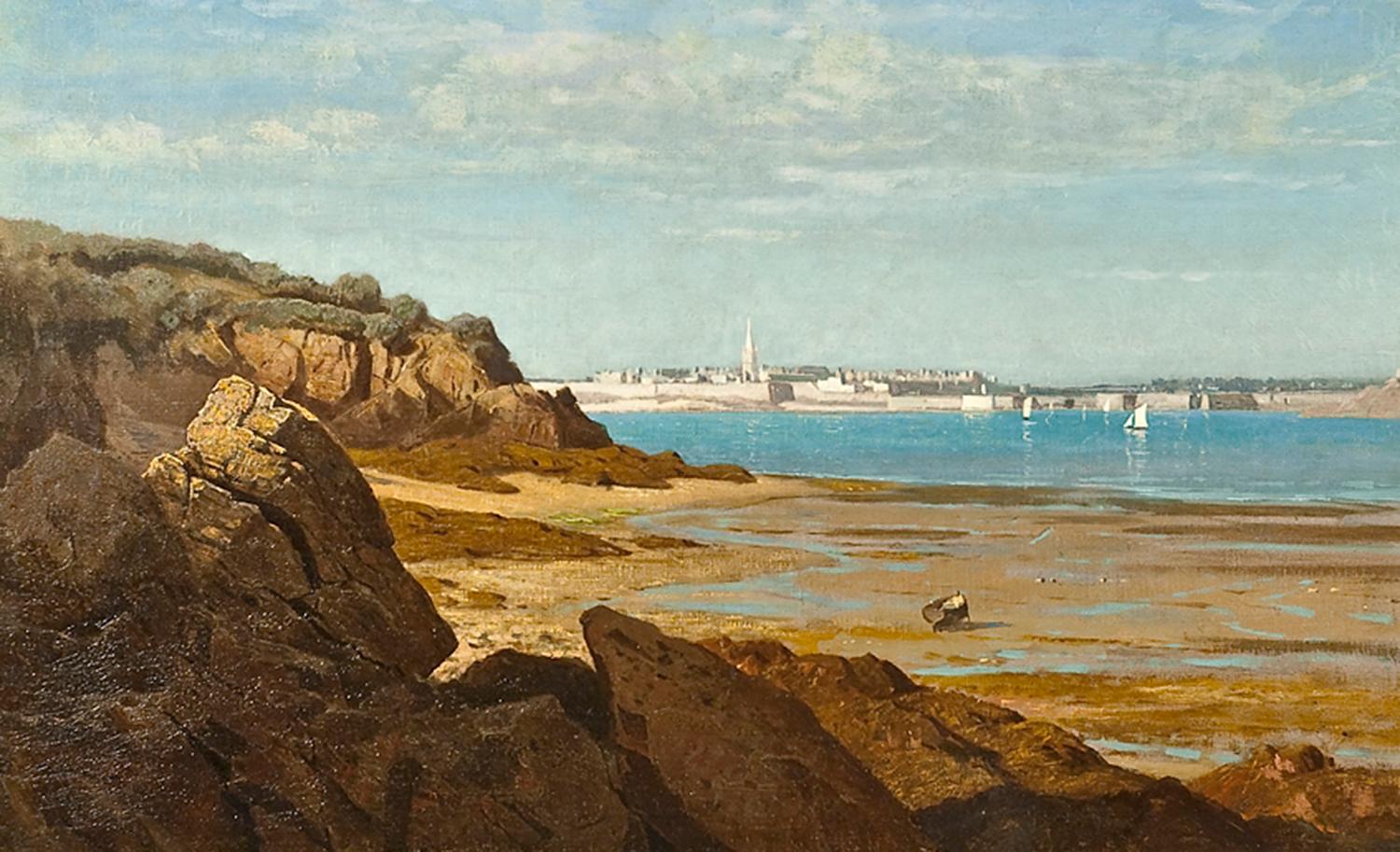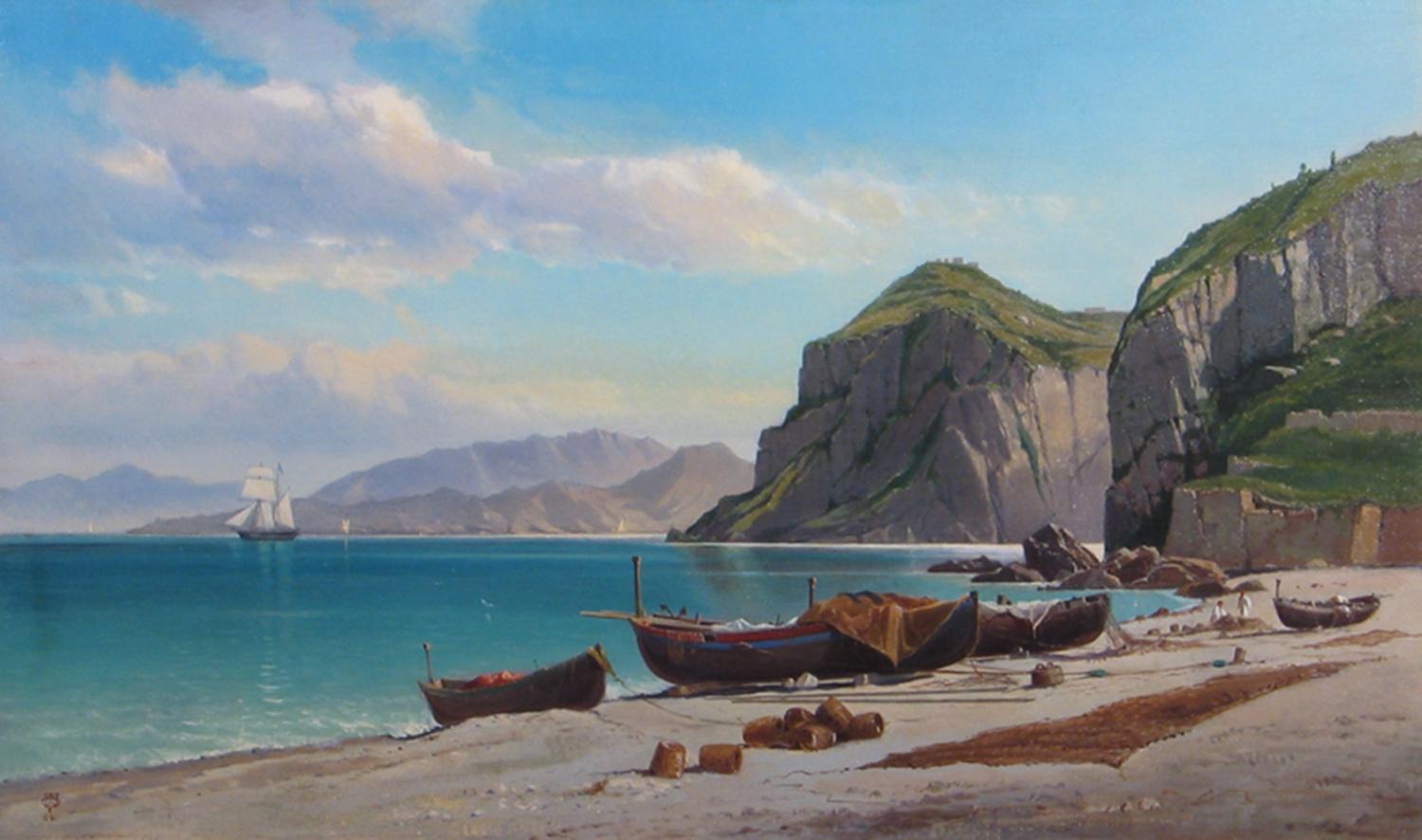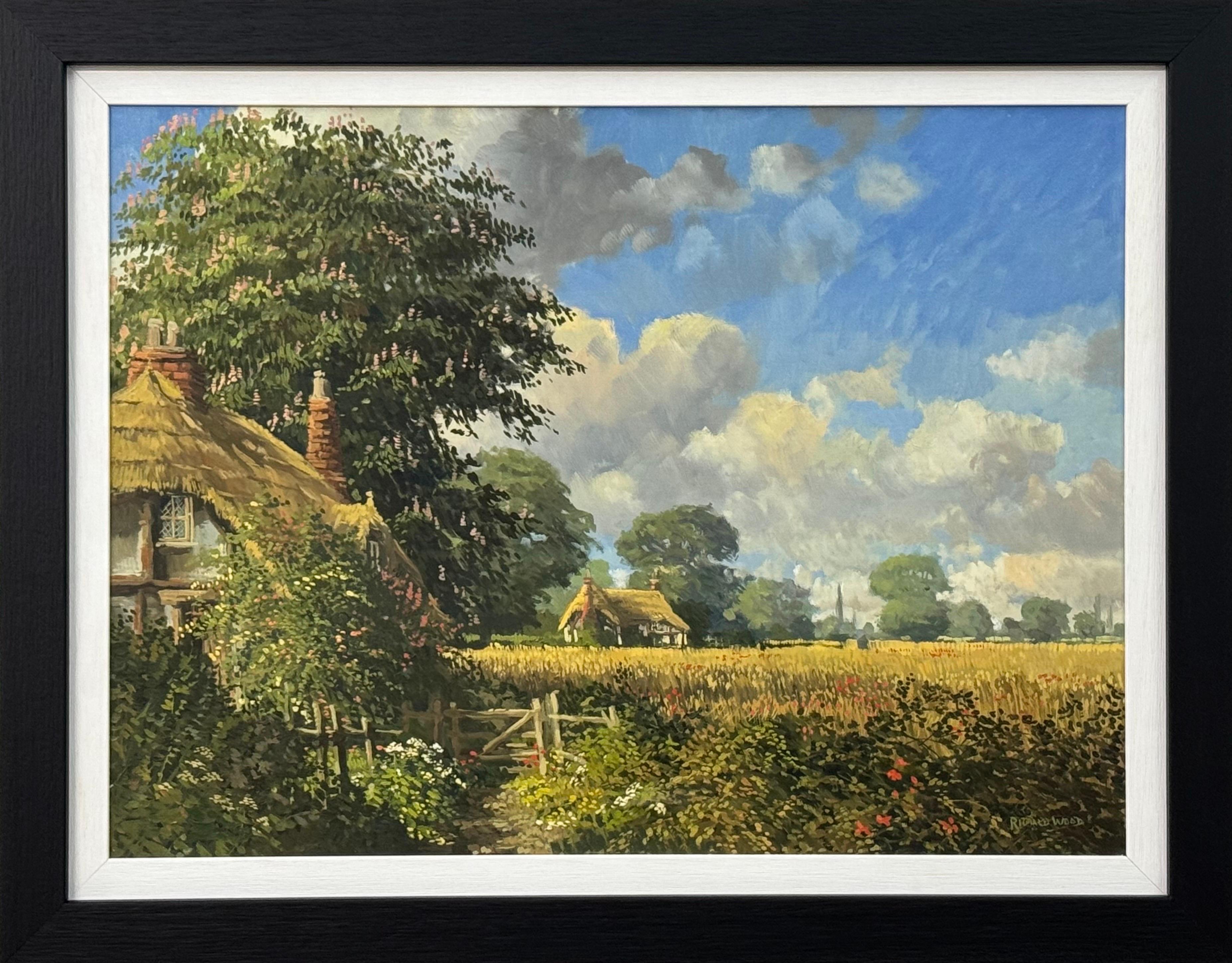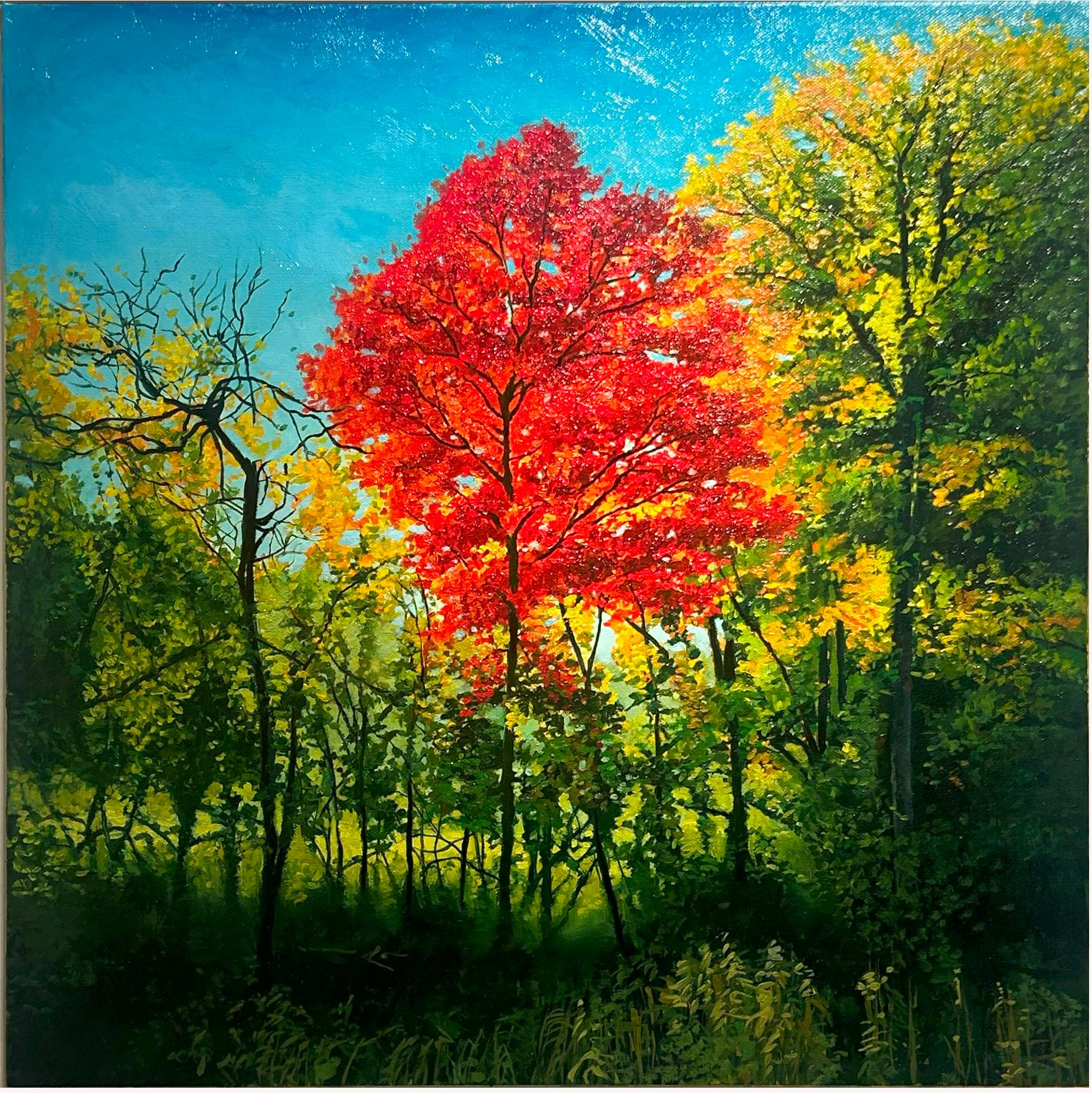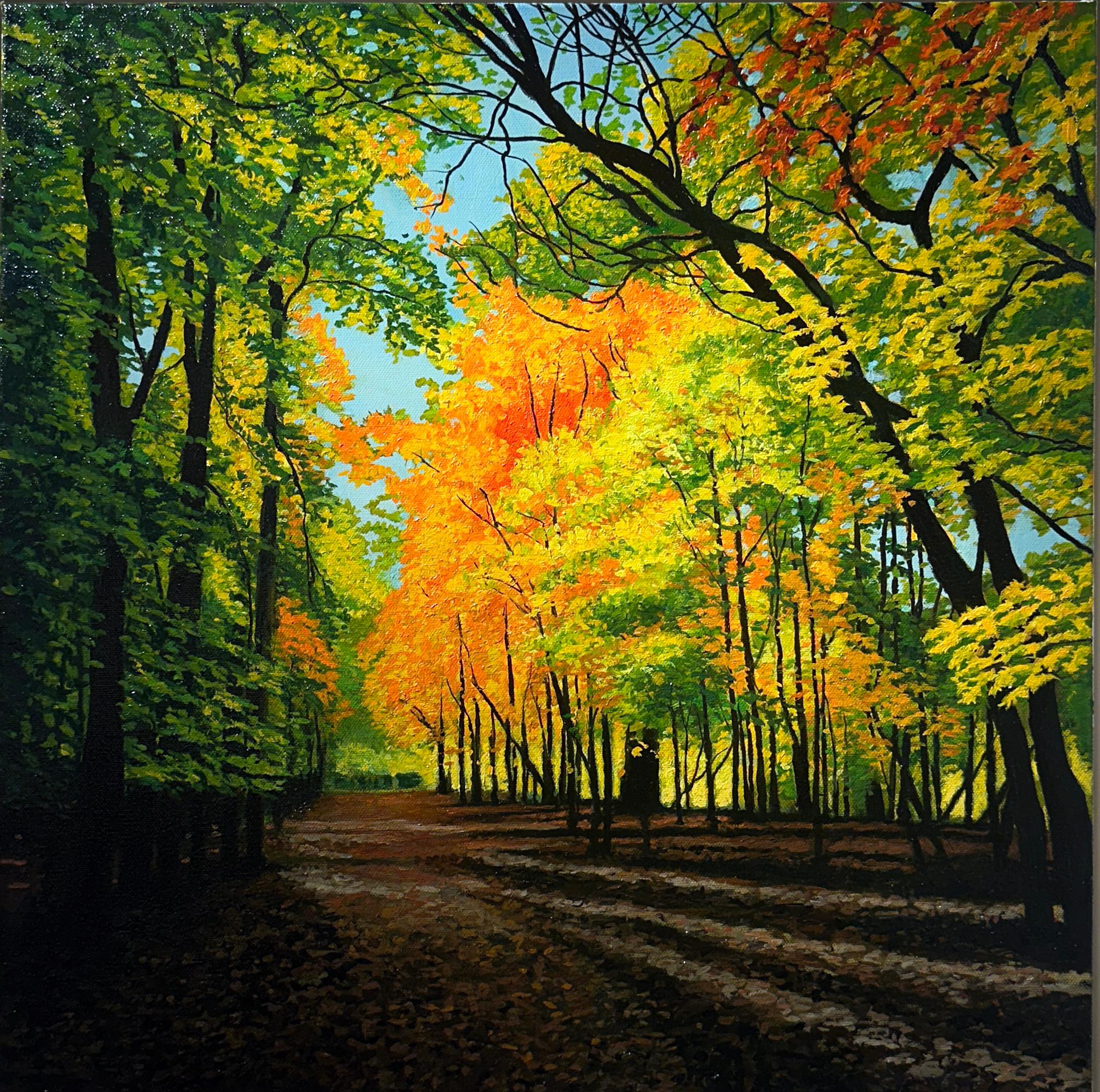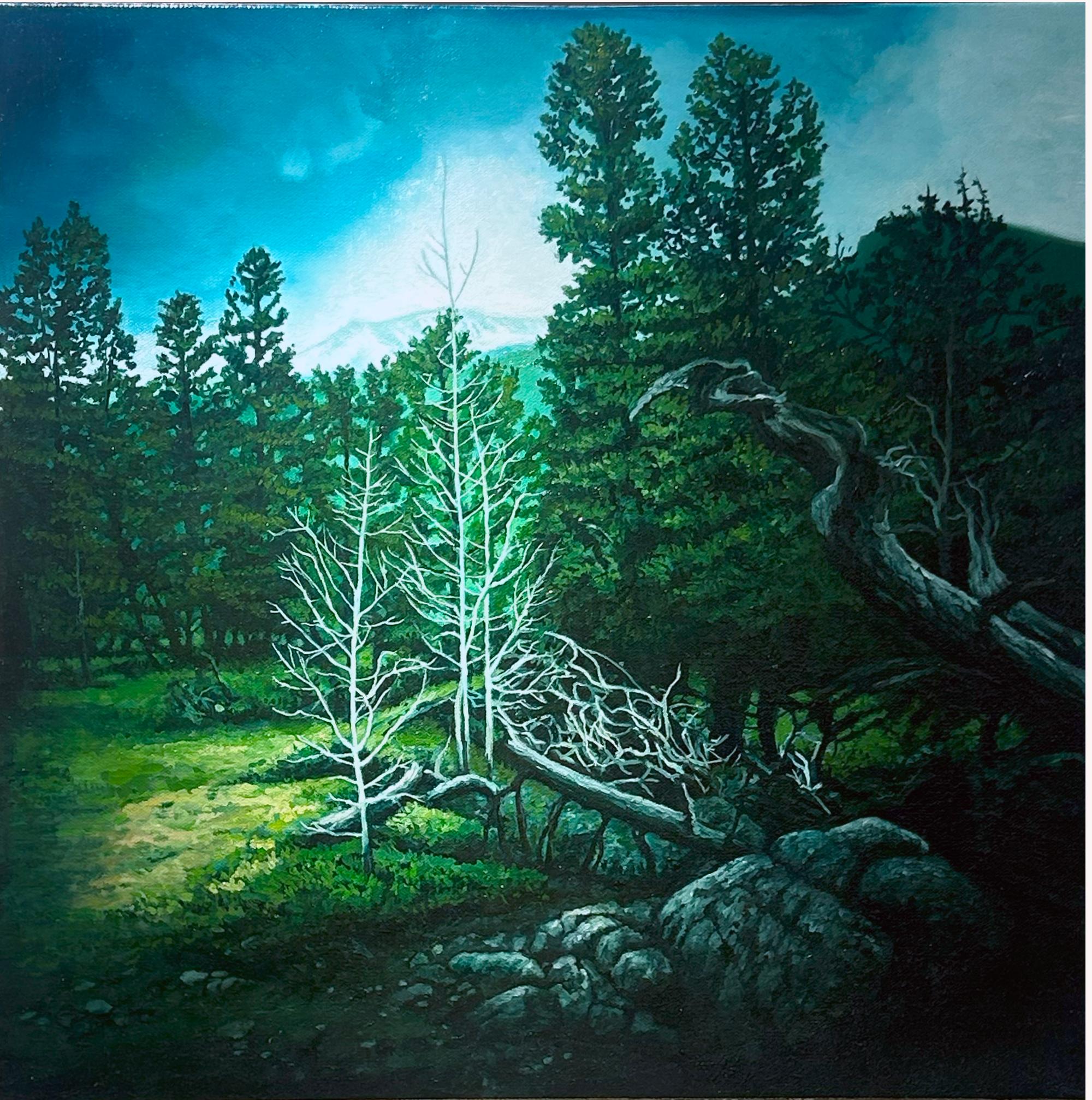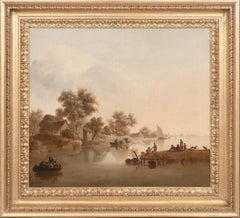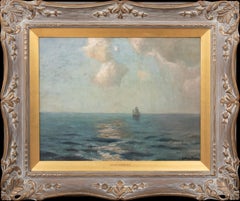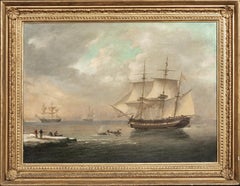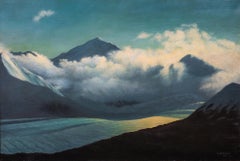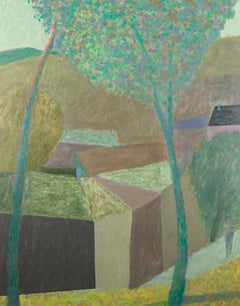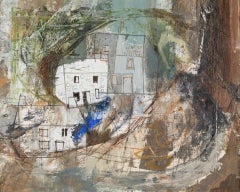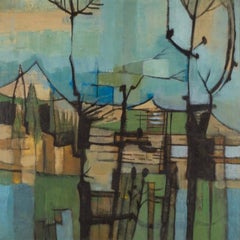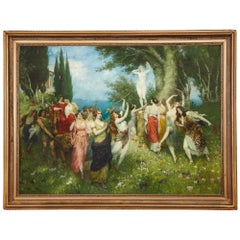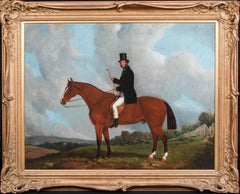
Portrait Of A Gentleman & Horse, 19th century signed
View Similar Items
Want more images or videos?
Request additional images or videos from the seller
1 of 13
UnknownPortrait Of A Gentleman & Horse, 19th century signed
About the Item
- Dimensions:Height: 35 in (88.9 cm)Width: 43 in (109.22 cm)
- Medium:
- Period:
- Condition:
- Gallery Location:Blackwater, GB
- Reference Number:Seller: 7832951stDibs: LU1577211607962
About the Seller
4.9
Platinum Seller
Premium sellers with a 4.7+ rating and 24-hour response times
Established in 2008
1stDibs seller since 2021
273 sales on 1stDibs
Typical response time: 1 hour
Authenticity Guarantee
In the unlikely event there’s an issue with an item’s authenticity, contact us within 1 year for a full refund. DetailsMoney-Back Guarantee
If your item is not as described, is damaged in transit, or does not arrive, contact us within 7 days for a full refund. Details24-Hour Cancellation
You have a 24-hour grace period in which to reconsider your purchase, with no questions asked.Vetted Professional Sellers
Our world-class sellers must adhere to strict standards for service and quality, maintaining the integrity of our listings.Price-Match Guarantee
If you find that a seller listed the same item for a lower price elsewhere, we’ll match it.Trusted Global Delivery
Our best-in-class carrier network provides specialized shipping options worldwide, including custom delivery.More From This Seller
View AllRiver Boat Landscape, 17th Century Jan Jozefsz VAN GOYEN (1596-1656)
By Jan Josefsz Van Goyen
Located in Blackwater, GB
River Boat Landscape, 17th Century
Jan Jozefsz VAN GOYEN (1596-1656)
Large 17th century Dutch landscape of figures boating on the river, oil on canvas. Excellent quality and condit...
Category
17th Century Landscape Paintings
Materials
Oil, Canvas
Clipper Off The Coast, St Ives, 19th Century
By Albert Julius Olsson
Located in Blackwater, GB
Clipper Off The Coast, St Ives, 19th Century
by Albert Julius Olsson RBA ROI RWA RBC RA, British (1864–1942) to $45,000
Large 19th Century view of a solitary clipper off the coast...
Category
19th Century Landscape Paintings
Materials
Canvas, Oil
The Greenland Whale Fishery, 18th Century attributed to Robert DODD (1748-1816)
Located in Blackwater, GB
The Greenland Whale Fishery, 18th Century
attributed to Robert DODD (1748-1816)
Large circa 1790 Whaling scene of The British South Sea Company in the Greenland whaling fishery, oi...
Category
18th Century Landscape Paintings
Materials
Canvas, Oil
CLOUDS BENEATH THE MOUNTAIN OAK, dated 1941
Located in Blackwater, GB
CLOUDS BENEATH THE MOUNTAIN OAK, dated 1941
by George Aubourne Clarke (1879-1949) - famous Scottish Meteorologist, Artist and Photographer
Large 19th century view of clouds over a ...
Category
19th Century Landscape Paintings
Materials
Oil, Canvas
Figure In A Landscape, dated 1915
Located in Blackwater, GB
Figure In A Landscape, dated 1915
by Sir Herbert Edwin Pelham Hughes Stanton (1870-1937) similar to $20,000
Large 1915 view of a figire in an extensive landscape, possibly near Mo...
Category
Early 20th Century Landscape Paintings
Materials
Oil, Canvas
Travellers In A Mountain River Landscape, 17th Century
Located in Blackwater, GB
Travellers In A Mountain River Landscape, 17th Century
Studio of Maerten RYCKAERT (1587-1631)
Large 17th Century Flemish mountain river landscape with travellers, oil on canvas. E...
Category
17th Century Landscape Paintings
Materials
Oil, Canvas
You May Also Like
Landscape with Green Path, Oil on Canvas, Landscape Painting with Trees, 2024
By Nicholas Turner
Located in Kingsclere, GB
Landscape with Green Path, Oil on Canvas Painting by Nicholas Turner b 1972, 2024
Additional information:
Signed, titled and dated
Oil on canvas
Dimensions: 76 x 61 cm
29 7/8 x 24 i...
Category
21st Century and Contemporary Landscape Paintings
Materials
Canvas, Oil
Two Dales, Derbyshire, Oil on Canvas House Painting by George Hammond Steel
By George Hammond Steel
Located in Kingsclere, GB
Two Dales, Derbyshire, Oil on Canvas Painting by George Hammond Steel 1900-1960, circa 1950s
Provenance
P. W. F. Burton esq.;
Private Collection, UK
Exhibitions
London, Leicester G...
Category
20th Century Landscape Paintings
Materials
Canvas, Oil
Landscape, 1950s Oil Painting. Friend of John Minton in Soho, London
By Robert Frame
Located in Kingsclere, GB
Landscape, oil on canvas painting by Robert Frame,1959 circa
Additional information:
oil on canvas
20 x 24 in
50.8 x 61 cm
(RF002)
Category
20th Century Landscape Paintings
Materials
Canvas, Oil
The Triumph of Bacchus, a large oil painting by Ferdinand Leeke
Located in London, GB
The Triumph of Bacchus, a large oil painting by Ferdinand Leeke
Oil-on-canvas, German, 1918
Frame: height 175cm, width 227cm, depth 10cm
Canvas: height...
Category
1910s Romantic Figurative Paintings
Materials
Canvas, Oil
$91,547 Sale Price
20% Off
Large Orientalist painting of an evening landscape by Lazerges
Located in London, GB
Large Orientalist painting of an evening landscape by Lazerges
French, 1895
Canvas: Height 74cm, width 100cm
Frame: Height 105.5cm, width 131cm, depth 8cm
This super Orientalist lan...
Category
Late 19th Century Landscape Paintings
Materials
Canvas, Wood, Oil
$91,547 Sale Price
20% Off
San Pedro Harbor
By Paul Sample
Located in New York, NY
It is infrequent, to say the least, that a diagnosis of tuberculosis proves fortuitous, but that was the event, in 1921, that set Paul Starrett Sample on the road to becoming a professional artist. (The best source for an overview of Sample’s life and oeuvre remains Paul Sample: Painter of the American Scene, exhib. cat., [Hanover, New Hampshire: Hood Museum of Art, 1988] with a detailed and definitive chronology by Sample scholar, Paula F. Glick, and an essay by Robert L. McGrath. It is the source for this essay unless otherwise indicated.) Sample, born in Louisville, Kentucky, in 1896 to a construction engineer and his wife, spent his childhood moving with his family to the various locations that his father’s work took them. By 1911, the family had landed in Glencoe, Illinois, settling long enough for Paul to graduate from New Trier High School in 1916. Sample enrolled at Dartmouth College, in Hanover, New Hampshire, where his interests were anything but academic. His enthusiasms included the football and basketball teams, boxing, pledging at a fraternity, and learning to play the saxophone. After the United States entered World War I, Sample, to his family’s dismay, signed on for the Naval Reserve, leading directly to a hiatus from Dartmouth. In 1918 and 1919, Sample served in the U.S. Merchant Marine where he earned a third mate’s license and seriously contemplated life as a sailor. Acceding to parental pressure, he returned to Dartmouth, graduating in 1921. Sample’s undergraduate life revolved around sports and a jazz band he formed with his brother, Donald, two years younger and also a Dartmouth student. In November 1933, Sample summarized his life in a letter he wrote introducing himself to Frederick Newlin Price, founder of Ferargil Galleries, who would become his New York art dealer. The artist characterized his undergraduate years as spent “wasting my time intensively.” He told Price that that “I took an art appreciation course and slept thru it every day” (Ferargil Galleries Records, circa 1900–63, Archives of American Art, Smithsonian Institution, available on line).
In 1920, Donald Sample contracted tuberculosis. He went for treatment to the world-famous Trudeau Sanitorium at Saranac Lake, in New York State’s Adirondack Mountains for the prescribed regimen of rest, healthful food, and fresh air. Visiting his brother in 1921, Paul also contracted the disease. Tuberculosis is highly contagious, and had no certain cure before the development of streptomycin in 1946. Even for patients who appeared to have recovered, there was a significant rate of recurrence. Thus, in his letter to Price, Sample avoided the stigma conjured by naming the disease, but wrote “I had a relapse with a bad lung and spent the next four years hospitalized in Saranac Lake.” The stringent physical restrictions imposed by adherence to “the cure” required Sample to cultivate an alternate set of interests. He read voraciously and, at the suggestion of his physician, contacted the husband of a fellow patient for instruction in art. That artist, then living in Saranac, was Jonas Lie (1880–1940), a prominent Norwegian-American painter and an associate academician at the National Academy of Design. Lie had gained renown for his dramatic 1913 series of paintings documenting the construction of the Panama Canal (The Metropolitan Museum of Art, New York; United States Military Academy, West Point, New York). Primarily a landscape artist, Lie had a particular affinity for scenes with water. His paintings, impressionistic, atmospheric, and brushy, never strayed from a realistic rendering of his subject. Sample regarded Lie as a mentor and retained a lifelong reverence for his teacher. Sample’s early paintings very much reflect Lie’s influence.
`
In 1925, “cured,” Sample left Saranac Lake for what proved to be a brief stay in New York City, where his veteran’s benefits financed a commercial art course. The family, however, had moved to California, in the futile hope that the climate would benefit Donald. Sample joined them and after Donald’s death, remained in California, taking classes at the Otis Art Institute in Los Angeles. In Sample’s account to Price, “I couldn’t stomach the practice of painting a lot of High Sierras and desert flowers which seemed to be the only kind of pictures that were sold here so I got a job teaching drawing and painting at the art school of the University of Southern California.” Initially hired as a part-time instructor, Sample progressed to full-time status and ultimately, by the mid-1930s, to the post of Chairman of the Fine Art Department. Sample, however, did not want to wind up as a professor. “Teaching is all right in small doses,” he wrote, “but I have a horror of drifting into being a college professor and nothing more.” At the same time as he taught, Sample began to exhibit his work in a variety of venues at first locally, then nationally. Though he confessed himself “a terrible salesman,” and though occupied with continued learning and teaching, Sample was nonetheless, ambitious. In 1927, he wrote in his diary, “I am eventually going to be a painter and a damned good one. And what is more, I am going to make money at it” (as quoted by Glick, p. 15). In 1928, Sample felt sufficiently solvent to marry his long-time love, Sylvia Howland, who had also been a patient at Saranac Lake. The Howland family were rooted New Englanders and in summertime the Samples regularly traveled East for family reunion vacations.
While the 1930s brought serious hardship to many artists, for Paul Sample it was a decade of success. Buttressed by the financial safety net of his teacher’s salary, he painted realist depictions of the American scene. While his work addressed depression-era conditions with a sympathetic eye, Sample avoided the anger and tinge of bitterness that characterized much contemporary realist art. Beginning in 1930, Sample began to exhibit regularly in juried exhibitions at important national venues, garnering prizes along the way. In 1930, Inner Harbor won an honorable mention in the Annual Exhibition of the Art Institute of Chicago. That same year Sample was also represented in a show at the Albright-Knox Gallery in Buffalo and at the Biennial Exhibition of the Corcoran Gallery of Art, Washington, D.C. In 1931, Dairy Ranch won the second Hallgarten Prize at the Annual Exhibition of the National Academy of Design, in New York. Sample also made his first appearances at the Carnegie Institute, Pittsburgh, and The Pennsylvania Academy of the Fine Arts, Philadelphia. In 1936, Miner’s Resting won the Temple Gold Medal at the Pennsylvania Academy’s Annual Exhibition. Always interested in watercolor, in 1936, Sample began to send works on paper to exhibitions at the Whitney Museum, New York.
While participating in juried exhibitions, Sample also cultivated commercial possibilities. His first New York art dealer was the prestigious Macbeth Gallery in New York, which included his work in a November 1931 exhibition. In 1934, Sample joined the Ferargil Galleries in New York, after Fred Price arranged the sale of Sample’s Church Supper to the Michele and Donald D’Amour Museum of Fine Arts in Springfield, Massachusetts. In 1937, The Metropolitan Museum of Art purchased Sample’s Janitor’s Holiday from the annual exhibition of the National Academy of Design, a notable honor.
As prestigious as this exhibition schedule may have been, by far Sample’s most visible presence in the 1930s and 1940s was the result of his relationship with Henry Luce’s burgeoning publishing empire, Time, Inc. Sample’s first contribution to a Luce publication appears to have been another San Pedro...
Category
20th Century American Modern Landscape Paintings
Materials
Canvas, Oil

